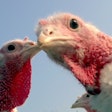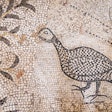.jpg?auto=format%2Ccompress&q=70&w=400)
The advertisement for Mount Barker Chicken (MBC) company's free-range flocks on Western Australian television shows some 50 to 60 birds as they embark on an adventure. The camera follows them making their way through a pool hall, a dance hall, a bowling green, a gym and what looks like a farmers' market where the production team has the good taste not to include shots of oven-ready chicken.
Finally they arrive at their regular club where the telephone rings and the barman answers the phone, "Yes, they are here. OK I'll send them home." The final shot is of the birds making their way through the farm gate and demonstrating that it may only last 56 days but it is a grand life on the free-range farms in the Mount Barker group.
As the company's publicity claims, "It is the high-exercise, low-stress existence that makes the meat incredibly succulent and flavoursome," making the point that "There's commercial chicken and free-range chicken, and there's Mount Barker free-range chicken!"
In addition to home-grown wheat, the birds get a taste of canola, lupins, peas and triticale but no antibiotics or growth promoters. It is not cheap to raise birds in this fashion but, according to Mount Barker, it is the only way to produce that unmatched depth of flavour.
Over the past 13 years, MBC has built production up to 30,000 birds/week from a trio of contracted farms to become the largest solely free-range chicken operation in Australia, claims general manager, Michael Tarling.
He estimates that retail sales of free-range in the state of Western Australia, now accounting for 12% of all poultrymeat sales, are growing at 20% per year and are on course to achieve 20% of the retail market in five years. Currently around half of sales are whole birds and the rest are portions.
Spreading the word to expand supply
With that rate of growth in mind, Mr Tarling is in the market for additional growers in the region, four hours south of Perth.
As he tells potential recruits, "The advantage of producing chickens is that it is not as seasonal as other farming activities such as cropping, which is heavily dependent on weather conditions, or the livestock buisness, which is dependent on export markets and open to currency fluctuations.
"We offer advice on broiler management and veterinary matters, supply Ross day-old chicks from an independent hatchery and feed from our parent company, Milne AgriGroup which has its own feed mill. All the processing, sales and marketing are handled by Mount Barker, which pays producers a management fee based on a mortality and feed conversion formula," he said, explaining that the parent company is a privately owned agricultural group involved in cropping, hay and livestock. He is both general manager MBC and Milne AgriGroup sales.
Mr Tarling puts the free-range premium at around 30%. "It is probably the premium on production costs, which we therefore need to pass onto the producers. We are renowned for our clever marketing, which has definitely contributed to our growth. We spend about 3% of turnover on promoting MBC and to answer your next question, our turnover figure is confidential."
One producer's experience of free-range
It was the growth of free-range meat production in Europe that encouraged the Riggall family to put down the roots of their 120,000 bird-capacity operation at Marri Downs, Mount Barker.
"We heard that free-range meat chicken was one of the few growth areas of farming. We went to see if it was true, discovered that it was and came to the conclusion that if it worked for the European market, it could also work for us," explained Tom Riggall.
With his wife, Narelle, he has been running things since 2000 following the retirement of his parents Tony and Oriole who founded the unit with five portable shelters, enough to hold 5000 birds. Now flock capacity is up to 120,000 in five static buildings. The birds are no longer slaughtered on the farm but transported to the MBC plant, 50km away.
Narelle Riggall explained how the demand for fresh, free-range chicken expanded so fast that they had to seek outside help to keep up. MBC bought the brand name and signed on the Riggalls to concentrate on rearing the livestock.
Now that flock size at Marri Downs has outgrown the farm's milling capacity, MBC feeds the flocks and blue gum, walnuts and grapes have taken over from the maize. The blue gum, which takes 10-12 years to reach the first harvest, is chipped for paper production while the 200 hectares of vineyards are contracted to Palandri Wines.
The walnut plantation is dual-purpose: it provides rootstock for a research project to see if it is possible to graft suitable fruiting varieties and provides shade and shelter for the five chicken houses.
"They are invaluable when it gets really hot," said Narelle Riggall who describes the summer temperature range of 25-35°C as mild.
Day-old chicks, which are supplied as-hatched, leave the brooder houses at 3-4 weeks to range in a series of paddocks. In the summer, they get up with the sun and are left out as late as possible to give the litter time to cool. The first flocks through were fed from a bucket but pan feeders and drinkers have since been installed.
All the birds are marketed as fresh. There is no market for frozen poultrymeat in Western Australia, where the chicken industry sees itself as a leader in the move towards less intensive ways of growing birds, even though they have not yet moved to use slow growing strains.

.jpg?auto=format%2Ccompress&fit=crop&h=167&q=70&w=250)













